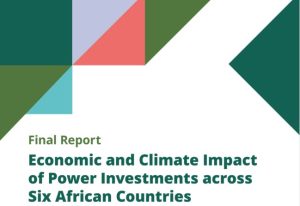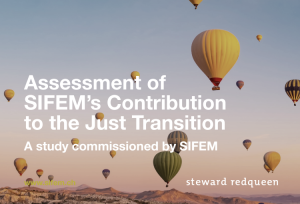Why private equity boosts developing economies
The private equity (PE) model is increasingly being used as an instrument for sustainable private sector growth in developing countries, despite its critics. Why? I see four main characteristics of the model that drive private sector development in developing countries: a long-term horizon, a focus on value creation, a flexible investment approach and a strong position of influence to improve ESG standards.
PE investment in developing countries is by no means a new development. The investment model has been utilised for well over two decades by development finance institutions (DFIs) such as FMO or CDC Group. The DFIs paved the way for new commercial private equity firms in developing countries, such as Actis or Abraaj, which rose up in the early 2000s. These firms have a stronger focus on financial returns than DFIs, but also view the realisation of economic and social change as a critical a part of success. The most recent development is the adoption of the model by impact investors, who specifically aim to realise a beneficial social and/or environmental impact alongside a financial return. What makes the PE model specifically suited to enhance the private sector in developing countries? Four main characteristics of the model could explain it.
Long-term investment horizon
Firstly, PE fund managers have a long-term investment horizon, with the regular life of a closed-end PE fund being ten years and the average holding period of an investee company being five years. The long-term commitment and involvement of a private equity investor can ensure that there is sufficient time and a stable environment to put an expansion or professionalisation plan to work. This is a prerequisite for successfully growing a business in developing markets, as constraints in the business environment – such as bureaucracy, access to energy or unreliable tax regimes – call for patience.
Value creation
Secondly, a strong focus on improving a company through active management such as through board seats is key to the PE model, simply because it is a major factor that determines financial return – and the fund manager’s share of it. In other words, there is a strong incentive for the investor to help grow the company. Fund manager team members often have previous boardroom experience, a good business network and specific sector or technological expertise. Companies can tap this expertise and use the network of its investor. This focus on growth and knowledge transfer is unique to the PE model and is in great demand in developing countries.
Flexible investment approach to fill the financing gap
A third important characteristic is the flexibility of PE, which can provide tailor-made financing solutions appropriate for the individual company’s cash flows. It can target companies in all stages, from start-ups to mature companies. Notably, it means that PE can target SMEs in emerging markets. As banks are wary to give out loans due to a lack of fixed assets at SMEs or charge excessively high interest rates, up to 68% of all (formal) SMEs in developing countries are severely underfinanced or even unfinanced. In the large company segment, PE has the ability to target and boost all sectors in developing economies – unlike investment through the stock market, which is often dominated by specific sectors, such as commodities and financial services.
Opportunity to improve ESG
Finally, PE investors are well-positioned to improve the environmental, social and governance (ESG) management of a business. This is mainly for two reasons. Firstly, PE fund managers can play a crucial role in introducing or improving ESG management due to a lower awareness about the business case for sustainability in developing markets. Secondly, PE’s long-term horizon provides the prerequisite for ESG improvements to substantially materialise. Patience and time are needed, as improvements in this field are no quick-fixes. They may even require a change of culture among employees, such as in the case of enhanced health & safety procedures. Managing ESG not only concerns downside risk, but also upside potential. There is often potential for substantial cost savings (through energy efficiency or improved waste management), improving labour productivity (through better working conditions) or improving management quality (by setting up board committees or establishing performance indicators). These are ESG issues, but also clear business concerns.
Effective private sector development
A shortage of capital is still considered as one of the major constraints to private sector development in developing countries. PE can be a highly effective model for providing capital and growing businesses sustainably in developing economies. The long-term investment horizon, strong focus on business growth, ability to target underfinanced business segments and opportunities to improve sustainability all contribute to this fact. Government agencies, impact investors and institutional investors such as family offices and pension funds should therefore consider committing to specialised emerging markets fund managers. It could provide an opportunity to not only generate attractive returns by tapping rapidly growing economies with a diversified portfolio, but also to effectively contribute to private sector development.


















